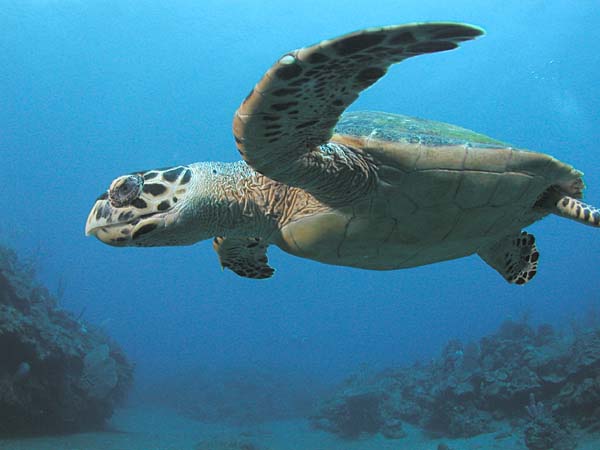Wildlife North America . com North American Animals - mamals, birds, reptiles, insects |
Hawksbill (Eretmochelys imbricata)
Hawksbill Turtle, Saba, Netherlands Antilles. Photograph by Clark Anderson/Aquaimages.. Some rights reserved. (view image details) 
Hawksbill Turtle - close up of head Photograph by Tom Doeppner. GNU Free Documentation License. (view image details)
HAWKSBILL FACTS
DescriptionThe Hawksbill Turtle is critically endangered as it has been hunted for food, also for its attractive shell scales which are made into tortoiseshell ornaments and jewelry. The turtle is green or brown with reddish brown to black markings. The upper jaw projects forward making a beak-like snout. It has large flippers with two claws. The shell is serrated round the edge. Size 1 m Environment tropical and warm temperate waters. Forage around coral reefs. Ledges and caves of reef systems provide shelter for resting. Food sponges, soft corals, sea grasses, molluscs Breeding Hawksbills nest on beaches in tropical oceans of the world, often sharing beaches with green turtles. Nests are typically placed under vegetation. Range found in tropical and warm temperate waters around the world. In Australia, found around the coast from New South Wales around the eastern and northern coast to Western Australia Conservation Status The conservation status in the 2004 IUCN Red List of Threatened Animals is "critically endangered". Classification
Home | Mammals | Reptiles | Birds | Insects | Privacy Policy | Disclaimer | Contact Us |